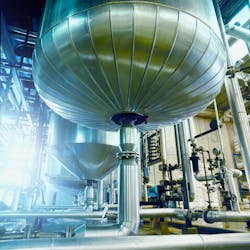Combining OEE and IoT Data to Improve Production
OEE is a popular key performance indicator (KPI) metric that illustrates how much of planned production time is productive. As such, an OEE score of 100% represents perfect production—manufacturing to the ideal product quality, as fast as possible, with no downtime.
Of course, 100% OEE is a theoretical maximum as the causes for not meeting OEE goals are numerous—from environmental factors to non-conforming raw materials, faulty devices, or simple human error. The more important issue overall is the plant’s performance reporting process, as management—at all levels—needs to have precise and reliable data readily available to improve operating decisions.
“Providing that data across hierarchy levels—from plant floor to the C-Suite—becomes especially difficult if the data acquisition is done with spreadsheets and curating data is one of the last steps before it is transferred to management. Recipients must have data that is valuable,” says Eschbach. “Curation, where data is collected from many different sources and aggregated into an information source that is more valuable than its independent parts, is an essential part of the reporting process. The people collecting the data must understand the purpose of the data. Likewise, the people reading the data need to understand where it came from and what controls were in place to assure accuracy, such as approval by the process engineer during the daily review.”
Eschbach notes that current IIoT (Industrial Internet of Things) and OT (operations technology) tools facilitate automated data collection which helps to check plausibility of the data on the plant floor before shift team changeover.
“With today’s availability of IIoT and OT data and the implementation of a PPM (plant process management) system, pertinent data from the many systems at work in plants can be accessed and analyzed accurately and in a timely manner,” says Eschbach. “This transparency can point operators to the losses which really matter and, with machine learning algorithms, can also account for the less-important losses. This alleviates tedious and possibly error-prone manual data input, supporting OEE in a proactive manner. In fact, it has been reported that for a single plant or process cell (using PPM), a year-over-year improvement in OEE of 3% to 15% has often been reported.”
This level of improvement is boosted by sharing of collected data via dashboards to track information across shifts to boost important communication between shifts as to what works and what may not.
Eschbach notes that such data transparency efforts are not only about finding solutions on one shift, but also about understanding patterns across shifts to drive continuous improvement initiatives. “To do so, production accounting needs to be executed 24/7 by each of the shift teams. Everyone needs to be on the same page to maximize potential for optimal outcomes. Also, there must be the actual OEE score available in the control room as well as pareto diagrams to dive into the data.”
Though tracking OEE is a beneficial KPI, Eschbach says it does not help to distinguish what to do to improve the plant’s output. That’s why the granularity of reporting captured allows for a data-driven approach to find the relevant problems. “In particular, accurate and transparent reporting of failures and analysis of the reasons for failure are needed to be sure to start the most promising improvement initiatives first,” he adds. “This is best done by starting with transparent reporting and contribution of the workforce’s knowledge.”
About the Author
David Greenfield, editor in chief
Editor in Chief

Leaders relevant to this article:

